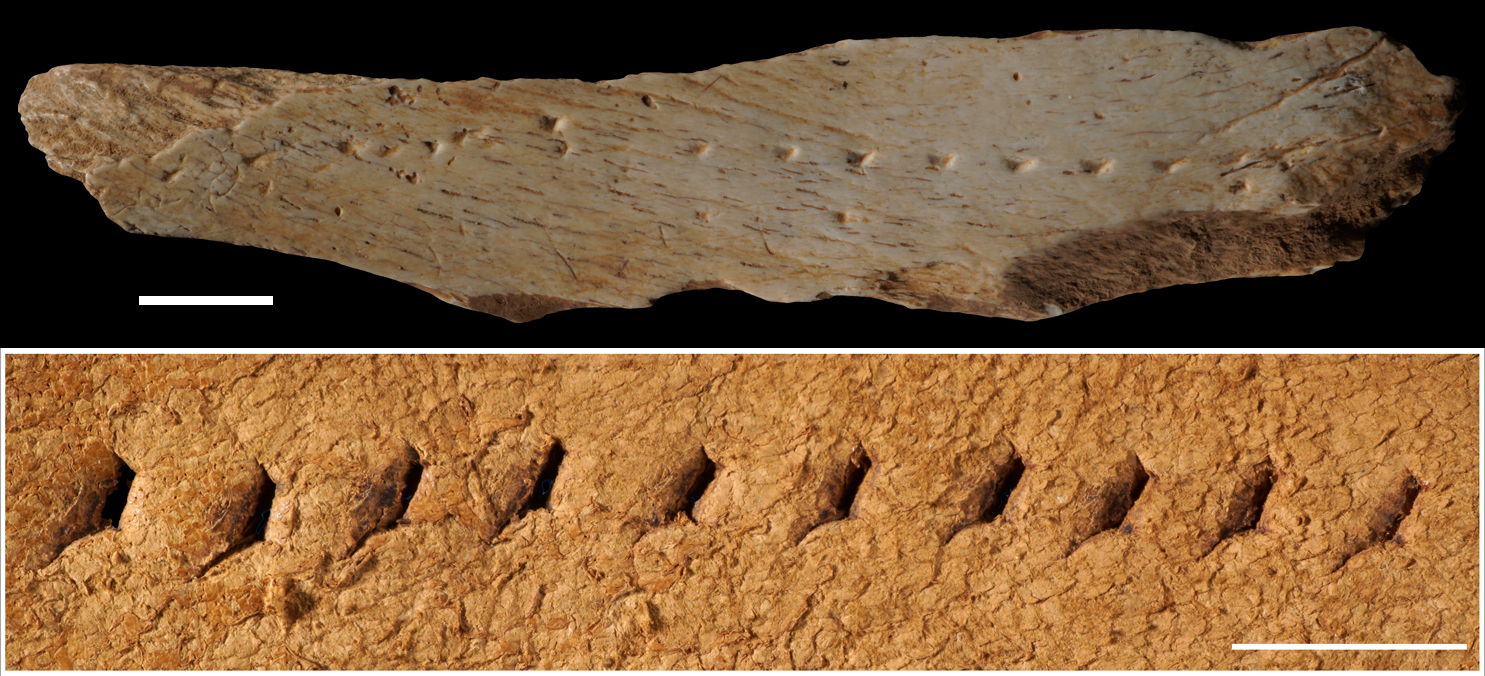A team of French and Spanish archaeologists report in the journal Science Advances the discovery in Catalunya of a leather punch board dating to 39,600 years BP. The study reveals that the pricking technique used in ethnographic leatherwork and by present-day cobblers to pierce thick leather pieces before assembling them together dates back to at least the beginning of the Upper Palaeolithic.
The manufacture of fitted clothing was surely instrumental for the survival of Palaeolithic people living in cold climate environments. However, little is known about the tools and techniques used to make fitted clothing prior to the invention of bone eye needles.
Traditionally, archaeologists equate the appearance of bone eyed needles with the emergence of fitted clothes. However, bone needles are not sturdy enough to repeatedly pierce through thick leather and may have been used mainly to sew thin undergarments that increased the clothes thermal insulation properties. In addition, this technology is relatively recent. The first bone eyed needles appear between 45,000 and 35,000 years ago in Siberia and Northern China. In Europe, they only appear around 26,000 years ago. This raises the question as to what tools and techniques were used by prehistoric people to make fitted clothes prior to the invention of the needles. Bone awls are attested in Southern Africa at sites dated to 73,000 yeast ago and at late Neanderthal sites in Europe but their use to pierce leather remains inferential.
A group of researchers from University of Bordeaux and University of Barcelona led by Luc Doyon reports the discovery of a leather punch board found at Canyars, a site located in Gavà near Barcelona, Spain. The object is a fragment of a large mammal hip bone, probably a horse or a bison, bearing 28 punctures on its flat surface. Microscopic analysis and experimental replications indicate these punctures were made with robust lithic burins. Their arrangement on the bone surface suggests the prehistoric artisan aimed to produce a linear stitch consisting of at least equidistant 10 holes on average 5mm from one another. The bone surface also records five other piercing events producing each two to three holes. The morphology, orientation and arrangement of the punctures rule out the possibility they could represent a decoration or a device to record numerical information. The archaeologists argue that the most parsimonious explanation for their presence on the bone surface is that they were produced during the manufacture or repair of leather items.

Archaeological remains found at the site, attributed to the Aurignacian period, and radiocarbon dates show that the pricking technique was used by modern humans living on the east coast of Spain 39,600 years ago. The study shows that 14,000 years before the introduction of eye needles in Europe, Palaeolithic hunter-gatherers were able to manufacture fitted leather goods and use them to cope with the harsh climatic episodes that affected the European territory before the introduction of sewing with eye needles. This discovery provides new data essential for the understanding of Palaeolithic sewing practices otherwise inaccessible through the study of the tools used to pierce leather.
Bibliography
Doyon, Faure, Sanz, Daura, Cassard, d’Errico. 2023. A 39,600-year-old leather punch board from Canyars, Gavà, Spain. Science Advances. DOI: 10.1126/sciadv.adg0834
Contacts
CNRS Researcher / Chercheur CNRS Luc Doyon T + 33 7 49 08 72 08
luc.doyon@u-bordeaux.fr
CNRS Researcher / Chercheur CNRS Francesco d’Errico T +33 6 25 61 68 54
francesco.derrico@u-bordeaux.fr
